Spekes Gazelle / Gazella spekei
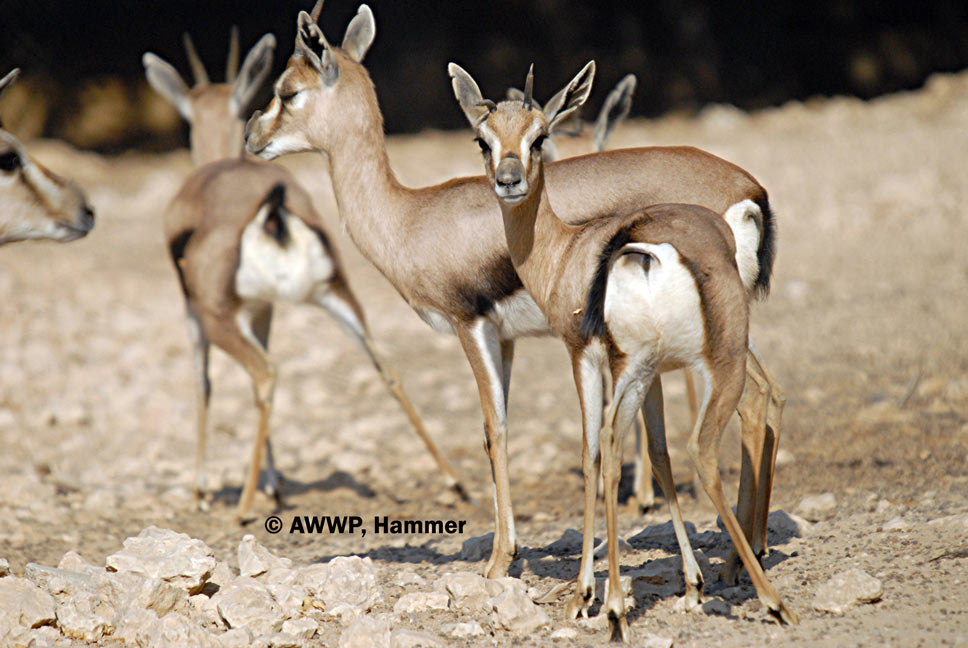 |
The Spekes Gazelle is confined to the Horn of Africa where it inhabits stony brush, grass steppes, semi deserts, open plains and plateaus at medium altitude. Its numbers are under threat by competition with livestock, hunting and increasing urbanization. Therefore, its status had risen from vulnerable to ENDANGERED.,The inflatable skin fold on their nose is to amplify their alarm call. In adult males it can reach up to the size of a tennis ball. AWWP successfully breeds this species for many years. |
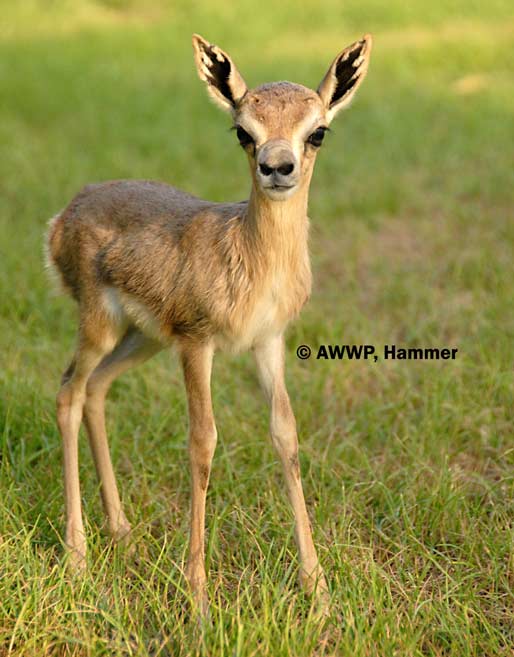 |
 |
Wildgoat / Capra aegragus
 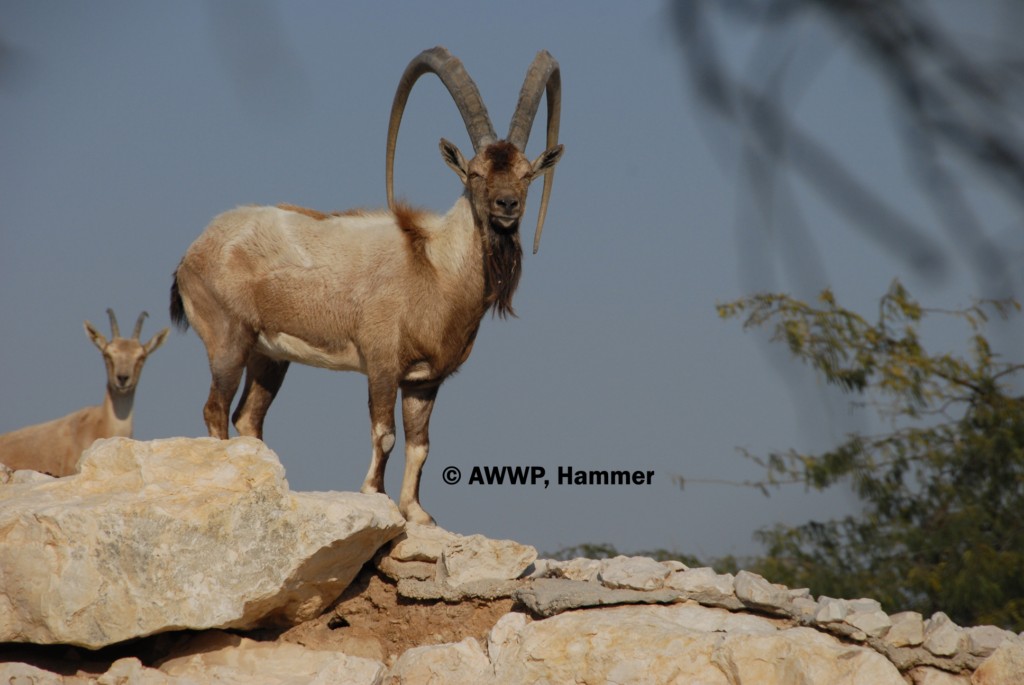 |
 |
|
|
The wild goat ranges discontinuously from central Afghanistan and southern Pakistan, west through Iran, western Turkmenistan, northern Iraq, the Caucasus region, as far as southwestern Turkey. It once occurred in Jordan, Lebanon and Syria, but is now extinct in these countries. The wild goat which is kept at AWWP is supposed to be from Iran. Wild goats live in arid mountainous areas, they gregarious, and if undisturbed will congregate in fairly large herds. The older males associate with such herds but generally keep together, often on the periphery of the main band. Wild goats are classified as VULNERABLE by IUCN.
Arabian Sandcat / Felis margarita harrisoni

Restricted to the Sahara, with other populations in Arabia and extending to Afghanistan, Pakistan, Turkmenistan, sandcats have a very widespread range but may be locally extirpated by feral cats and dogs and by introduced diseases and parasites. Inhabits very arid areas, especially where there are dunes; it may also be seen in rocky terrain. Since 2001, AWWP regularly breeds the Arabian Sandcat (Felis margarita harrisoni). 36 sandcats were born in AWWP until now.
In 2004, AWWP has joined the International breeding program for this species. 16 animals have already been sent to other participating facilities worldwide.
Cheetah / Acinonyx jubatus soemmerringii
 |
  |
|
|
Cheetahs are known as the fastest land mammals, and catch their prey, principally small- to mid-sized ungulates, especially gazelles, in high speed chases up to 103 km per hour, over distances of hundreds of meters. Cheetahs are primarily found in open grassy habitats, but also make use of dry forest, savanna woodland, semi-desert and scrub, being absent from tropical rainforest. Several subspecies are described.
Cheetahs have disappeared from huge areas of their historic range. In Eastern Africa, habitat loss and fragmentation was identified as the primary threat but also conflicts with farmers and depletion of the wild prey base, interspecific competition with other large predators, especially lion, illegal cross-border trade in live animals and illegal trade in skins, as well as capture of live cubs for trade to the Middle East are contributing to the decline of this species. The IUCN classifies the cheetah as VULNERABLE. There is an international breeding program for North- East African cheetahs, where AWWP participates in
Common marmoset / Callithrix jacchus
  |
 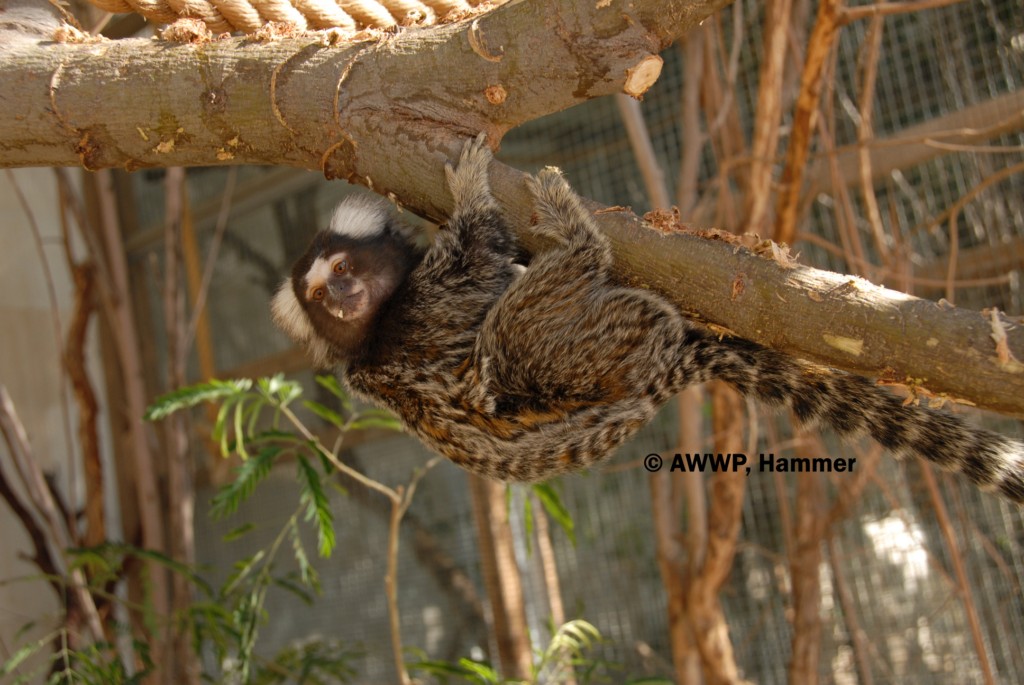 |
|
|
The common or white tufted ear marmoset occurs in Brazil, where their habitat ranges from the edge of forests into the deep forests, but they also appear in fields. Like the pygmy marmoset Callithrix jacchus is a gum-feeding specialist, with gouging lower incisors to excavate holes in gum-producing trees to guarantee gum year-round. Common marmosets live together in family groups of four to 15 animals, usually mated adults and their offspring. All adults and subadults share in the care of the young. The IUCN classifies this species as LEAST CONCERN.”
Golden Handed Tamarin / Saguinus midas
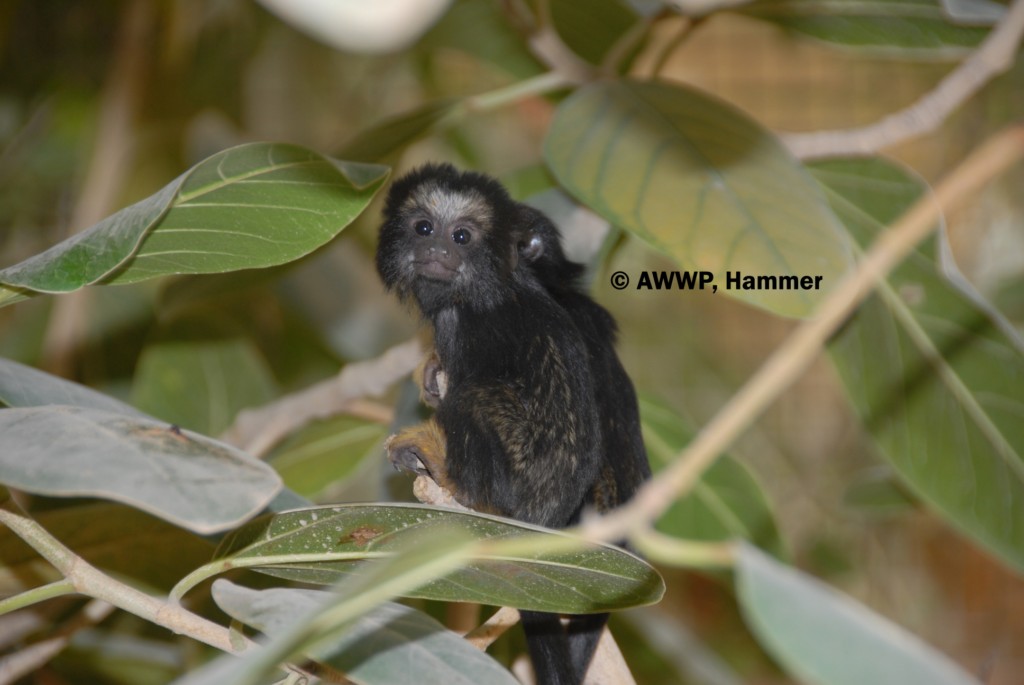 |
 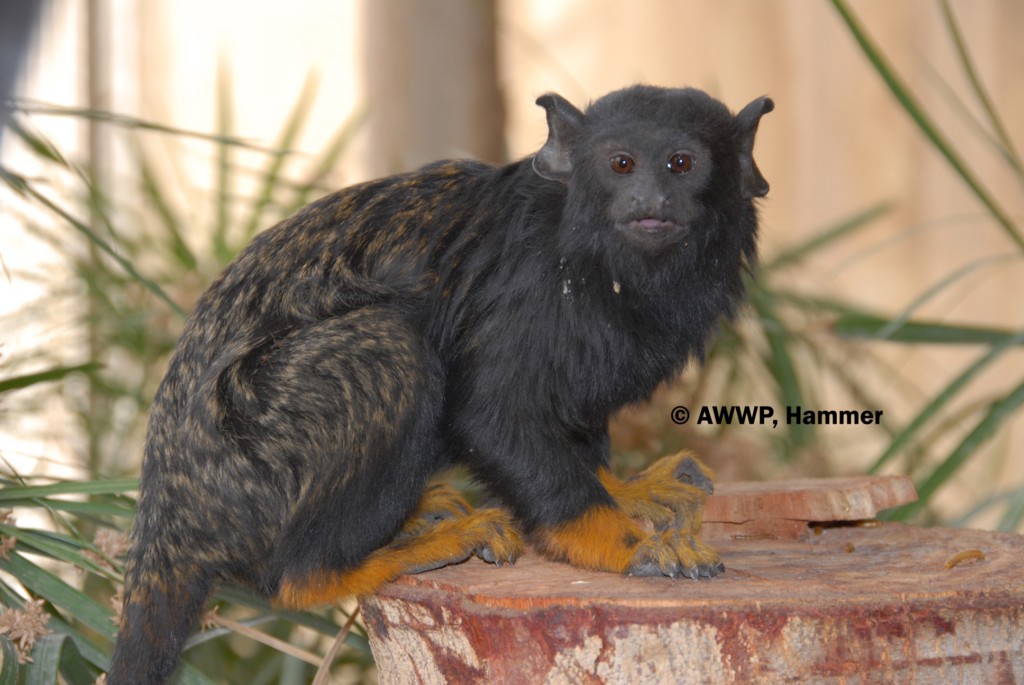 |
|
|
The golden or yellow handed tamarin occurs in Brazil; French Guiana; Guyana and Suriname. It is common throughout the majority of its range, and considered the most widespread and abundant of all callitrichids and is currently expanding its range. This species occurs in lowland and hilly rainforest, savanna forest, white-sand forest, and also in secondary habitats in close proximity to villages and cities. AWWP keeps two well reproducing family groups and participates in an international studbook for this species. The IUCN classifies this species as LEAST CONCERN.
Pygmy Marmoset / Cebuella pygmaea
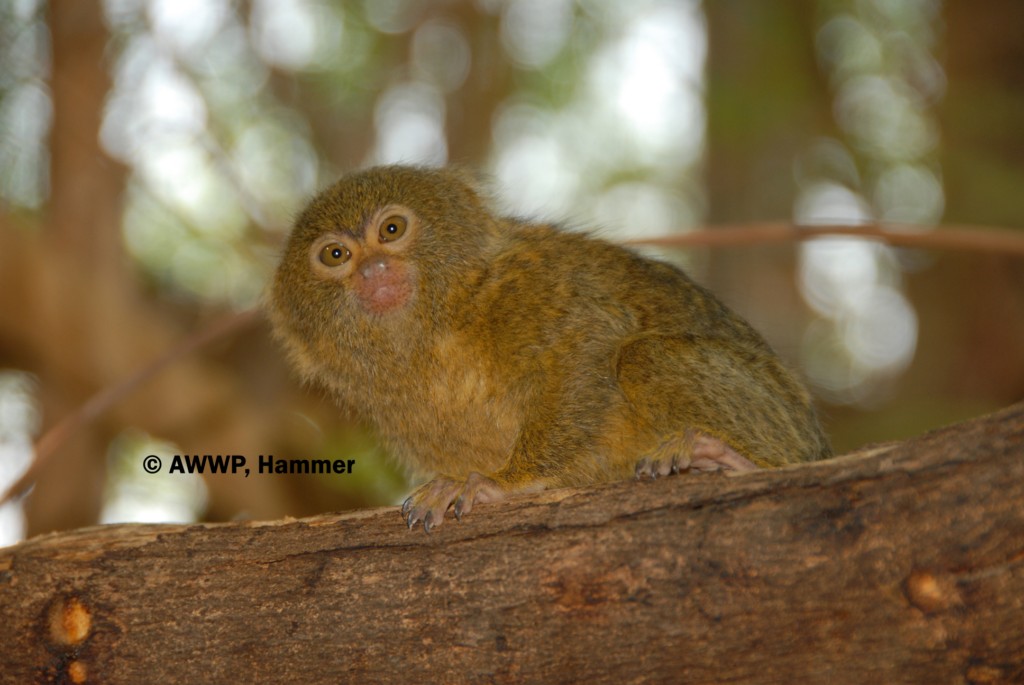 |
 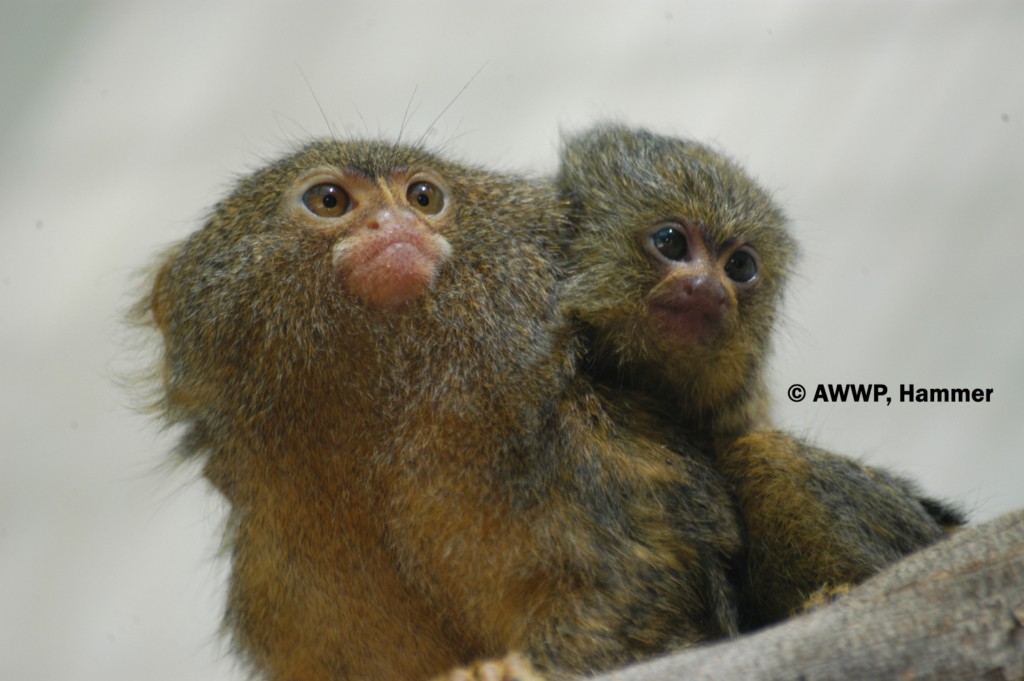 |
|
|
The pygmy Marmoset is native to the rainforest canopies of western Brazil, southeastern Colombia, eastern Ecuador, and eastern Peru. It is one of the smallest primates, with its body length ranging from 14-16 cm (excluding the 15-20 cm tail) and weight up to 140 g. They are feeding on fruit, leaves, insects, and sometimes even small reptiles. Much of their diet, however, comes from tapping trees for sap. Up to two-thirds of their time is spent gouging tree bark to reach the gummy sap. The Pygmy Marmoset has specialized incisors for gouging holes in bark. AWWP keeps two well reproducing family groups of this species. The IUCN classifies this species as LEAST CONCERN.
Egyptian Tortoise / Testudo kleinmanni
  |
 |
|
|
The Egyptian Tortoise Testudo kleinmanni is a small tortoise inhabiting the fairly arid deserts fringing the south eastern coasts of the Mediterranean Sea. Throughout its range the Egyptian Tortoise has been subjected to severe pressures, which has lead to its extinction in Egypt. There are just 2 two distinct regions in Libya where this species can still be found. In addition to agricultural (including overgrazing), developmental and industrial pressures, T. kleinmanni was very heavily affected by the (eventually illegal) national and international pet trade that began using the Libyan stock after Egyptian subpopulations were harvested to extinction. The global population of T. kleinmanni could realistically face extinction in less than 20 years or around one generation if degradation of landscape and trade cannot be stopped. AWWP regularly breeds this as CRITICALLY ENDANGERED species regularly for many years. AWWP also participate in the international breeding program.
Leopard Tortoise / Geochelone pardalis
  |
 |
|
|
The Leopard tortoise is a large and attractively marked tortoise which has a wide distribution in sub-Saharan Africa. It grows to quite a respectable size, with adults reaching up to 60cm and 30kg.The leopard tortoise is a large, grazing species that favours semi-arid, thorny to grassland habitats, where it lives extensively upon mixed grasses, fruit and pads of cactus, succulents and thistles. Leopard tortoises are the fourth largest species of tortoise, after the Sulcata tortoise, the Galapagos tortoise, and Seychelles Island tortoise.
Spur-thighed Tortoise / Testudo graeca
  |
|
The spur-thighed tortoise is widely distributed. The division of spur-thighed tortoise into subspecies is difficult and confusing. Given the huge range over three continents, the various terrains, climates, and biotopes have produced a huge number of varieties, with new subspecies constantly being discovered. There are currently at least twenty published subspecies.The IUCN classifies the spur-thighed tortoise as VULNERABLE.






















